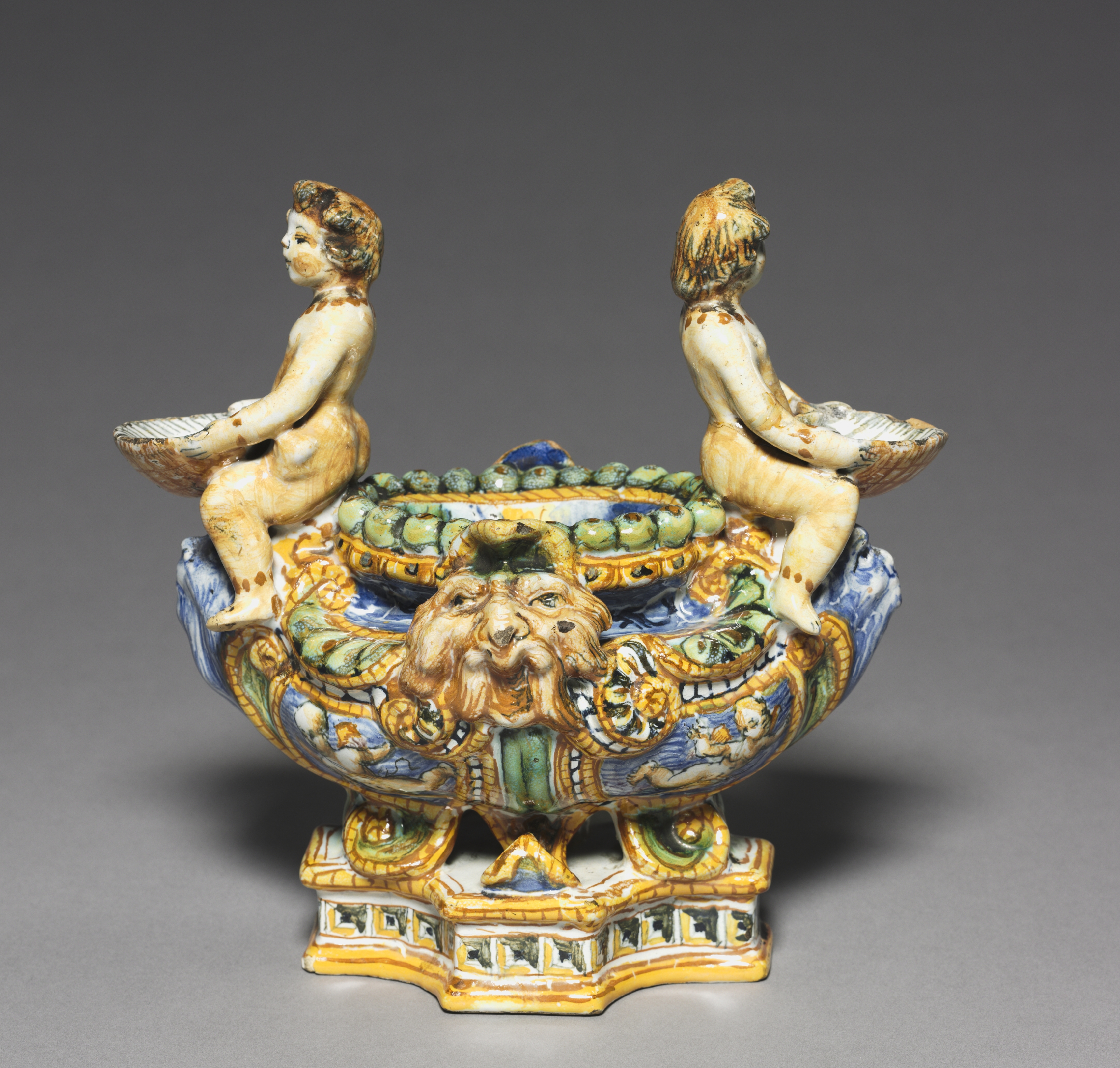The Cleveland Museum of Art
Collection Online as of April 18, 2024

Saltcellar
c. 1570–90
maker
circle of the Patanazzi Family
(Italian)
Overall: 20.3 x 21 x 12.8 cm (8 x 8 1/4 x 5 1/16 in.)
Gift of Mr. and Mrs. Philip R. Mather 1945.126.2
Location: 118 Italian Renaissance
Did You Know?
During the Renaissance, salt was an expensive commodity and was used to both season and preserve food.Description
During the Italian Renaissance of the 1400s and 1500s, nobles and merchants eager to express their wealth and sophistication ordered ceramics for dining, display, and storage. Known as maiolica, because it resembled the brightly colored ceramics from the Mediterranean island of Majorca, these ceramic vessels were covered with a tin glaze that provided an opaque white surface on which colorful decoration could be painted.- Samuel Mather, Cleveland.
- Foote, Helen S. “Gifts to the Majolica Collection.” The Bulletin of the Cleveland Museum of Art 33, no. 4 (April 1946): 36–38. Mentioned: pp. 36-7 25141269
- No legacy exhibitions.Classic to Baroque: A Style Change in the Arts. The Cleveland Museum of Art, Cleveland, OH (organizer) (September 30-November 13, 1949).
- {{cite web|title=Saltcellar|url=false|author=the Patanazzi Family|year=c. 1570–90|access-date=18 April 2024|publisher=Cleveland Museum of Art}}
Source URL:
https://www.clevelandart.org/art/1945.126.2